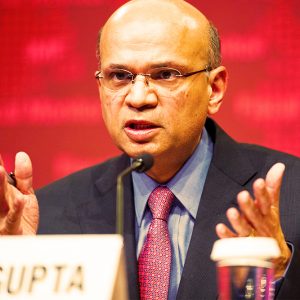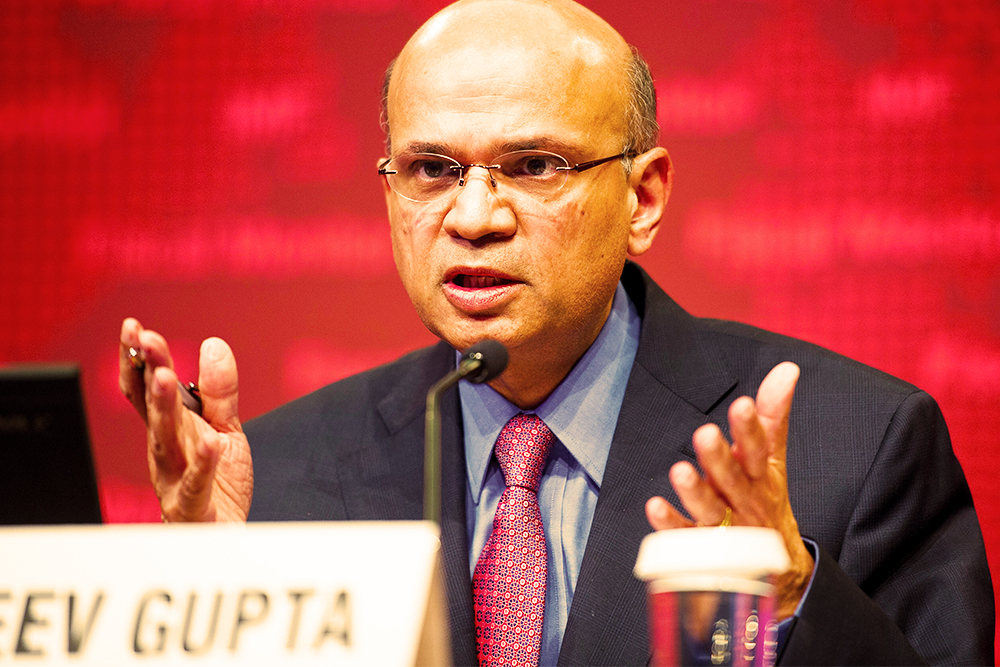Sanjeev Gupta, a UK-based billionaire and new owner of the Whyalla steelworks and OneSteel business has officially launched his plans to roll-out a massive solar investment of more than 1 gigawatt (GW). The mogul is also finalising on plans to set up his own “big battery” and hydro storage in Australia.
Gupta’s appetite for solar investment and storage projects took off when his GFG Alliance acquired the collapsed OneSteel business late last year. He insisted that the switch to clean energy was crucial in saving the Whyalla SteelWorks and safeguarding the dimming future of key steel plants in both NSW and Victoria.
According to Liam Reid the chief of project development at SIMEC Energy, the planned roll-out of solar energy targets over 1GW in the state of South Australia is to tap into the “extraordinary solar resource” in the state.
The solar rollout has already begun with 6,000 employees of the company in Australia expected to salary sacrifice to install solar and batteries in their homes.
This move is poised to help GFG Alliance employees to save on their electricity bills. Sign-ups by those interested are underway and seem to be “getting some traction”.
Commercial solar plans
GFG also hopes to initiate a project for 40MW of rooftop solar panel installations across 80 different company locations in Australia, with the inclusion of the Newcastle Wire Mill based 10MW plant.
In addition, GFG plans to build a large-scale solar farm with an 80MW capacity near Whyalla to deliver local steel works. This proposed project is expected to receive an investment approval in the near future.
These proposed solar installations will fall “behind the meter”, meaning the energy generated will only be supplied to employees, Whyalla Steelworks and the industrial facilities.
The initiatives will be managed by SIMEC ZEN Energy; GFG’s newly amalgamated Australian solar and Storage Company.
These new solar PV installations will be followed by other solar energy projects at Whyalla, with up to 200MW of grid-connected solar being installed at GFG land, and in another location, alongside battery and pumped hydro storage installations.
Battery installation project
Reid noted that the company was in its final stages of their first ever “big battery” installations expected to feature a 120MW/140MWh lithium-ion battery storage plant near the Davenport sub-station in Port Augusta.
Once completed, this facility is expected to outdo the renowned Tesla big battery which is currently the largest in the world, and would serve more large-scale solar investment in the state.
“We are aiming for 1GW+ (of solar) in the medium term for South Australia, capitalising on South Australia’s extraordinary solar resource,” Reid stated during a presentation at a South Australian Future Energy conference in Adelaide, just days to the state election.
“As the cost of renewable energy declines, South Australia’s abundant energy resources can be used to scale up SA’s energy-intensive skilled manufacturing industries.”
He added that Australia should top the global metals manufacturing industry, with a major factor of this being lower electricity costs supplied by solar investment, wind and storage.
“The cost of renewables is continually dropping – they are now viable alternatives to conventional fuels,” he noted.
“SIMEC Energy’s goal is to supply this energy to its GFG siblings with an optimised mix of large-scale and distributed technologies … then build a business serving a wider group of industrial customers with similar needs.
“With growth comes more opportunity, more learning and reduced costs – it’s a portfolio approach that helps make SA’s energy transformation faster and grow further to take advantage of South Australia’s “extraordinary solar resource”.
Australia’s renewable energy outlook
The company’s small and large-scale solar investment plans are indicative that South Australia is well on its way to achieving 75 percent renewable energy share despite the new Premier Jay Weatherill’s new target, and the Liberal Party’s reluctance.
According to the Australian Energy Market Operator, renewables share in South Australia is expected to hit 73 percent by 2020/21.
Besides Gupta’s plans, there are other upcoming solar projects at Port Augusta (220MW) and Tailem Bend (117MW), a massive wind farm situated at Port Augusta (212MW), as well as many other wind, solar and energy storage projects.
Gupta’s quest to establish a huge industrial group solely powered by solar and storage goes against the unending criticism that renewables are an expensive “economy wrecker”. As a matter of fact, it could just be the economy saver.
In a statement, Reid said the company hopes to install enough solar panels to fully cater for its own energy needs as well as those of third parties.
“If the price is low enough for GFG, it’s likely to be low enough to supply third parties with any excess generation,” he noted.
“A customer-led self-supply “pull” should help make better decisions than a standardised generator/retailer “push”,” he said.
Reid also mentioned the company’s plans to generate 90MW/390MWh of pumped hydro storage at the dilapidated Iron Duchess Ore pit within the South Middleback Range, located nearly 50km from Whyalla.
So far, the concept study has been completed but further studies will be initiated and financed by the federal and South Australian governments, with GFG expecting to conclude the “first-of-its-kind” project by 2022.
Reid mentioned that in future, the company could replicate the initiative across other GFG mine sites including the Iron Baron and the Iron Knob.

